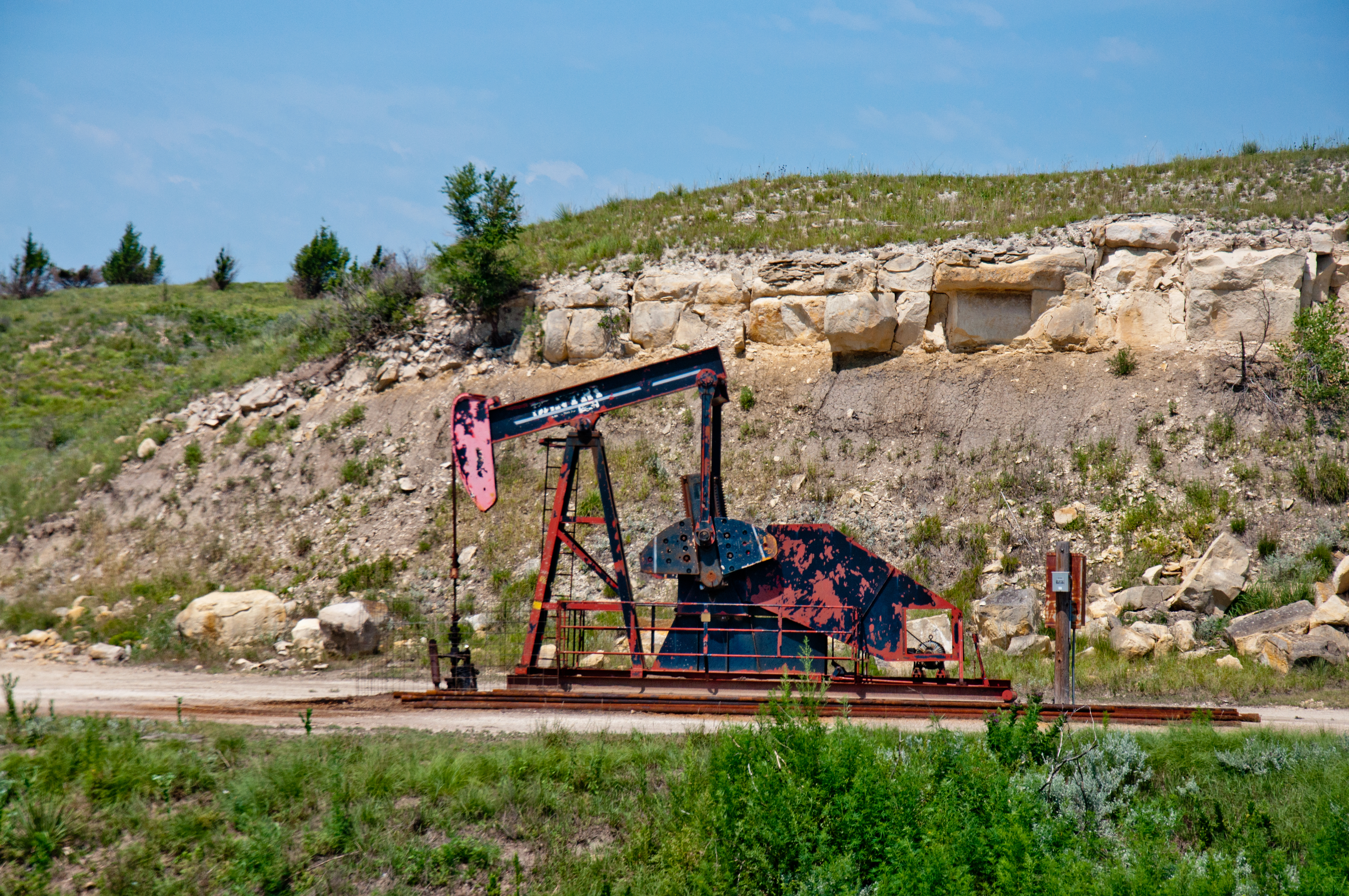By JOHN P. TRETBAR
Kansas Common crude at CHS in McPherson gained a quarter per barrel on Friday and starts the week at $43 per barrel. The Kansas benchmark had ups and downs last month. CHS reports the average for the month of September for Kansas Common was $46.91 per barrel, although it ended the month at $44.25, down a dollar from the first of the month.
Baker Hughes reported a drop of three oil rig and two gas rigs in its weekly Rotary Rig Count for a total of 855 active rigs across the U.S. New Mexico added four rigs while Texas dropped four. Oklahoma was down three rigs. Canada reported 144 active rigs, up 17 on the week.
Operators are about to spud a new well on a lease in Barton County, and drilling is underway at one site each in Barton, Ellis and Russell counties. Independent Oil & Gas Service reports eleven rigs in eastern Kansas that are moving in, rigging up, drilling or relocating, up one for the week. There are 26 active rigs west of Wichita, which is down three.
The government reported U.S. crude production for July at 365 million barrels, an increase of about 3.5 million barrels over the month before. Total production nationwide through July of this year topped 2.5 billion barrels. EIA said July production in Kansas totaled at 2.81 million barrels in July, or about 90,000 barrels per day.
Oil-by-rail traffic increased by one percent, marking one of only two freight categories to show a weekly increase. During the week that ended September 28, operators moved 12,245 rail tanker cars carrying petroleum or petroleum products, according to the latest report from the Association of American Railroads. Amid declines in total rail traffic, oil-by-rail last week posted its first year-on-year decline in recent memory.
The government reported U.S. crude-oil production last week of 12.38 million barrels per day, down about 92,000 barrels per day from the week before but well ahead of the 11 million barrels produced during the same period last year.
Crude oil inventories increased last week by 3.1 million barrels, but remain at the five-year seasonal average at 422.6 million barrels. The Energy Information Administration reports imports are down 87,000 barrels per day from the previous week. The four-week average for imports is more than 15% below the same period last year, at 6.6 million barrels.
A small lizard found among the dunes straddling New Mexico and West Texas in one of the nation’s richest oil basins is at the center of a legal complaint filed in federal court in Washington Tuesday. Environmentalists want the U.S. government to add the dunes sagebrush lizard to the endangered species list. It’s part of a fight that stretches back to the Bush and Obama administrations and could affect part of the multi-billion dollar energy industry in the Permian Basin.
The merger-and-acquisition frenzy in the oil patch continues. The Daily Oklahoman reports on three mega-deals last week, including the sale of Roan Resources to Citizen Energy Operating. That deal is worth a reported one billion dollars, and includes the assumption of about $780 million of Roan’s debt. Analysis from Austin, Texas-based Enverus notes that the industry’s merger and acquisition activity topped $17 billion in the third quarter and reached more than $85 billion through the first three quarters of this year.
The oil and natural gas industry in New Mexico last year provided more to the state’s annual budget than any other industry, nearly $2.2 billion, or 32% of the $6.88 billion in state funding for schools, infrastructure, health care and public safety. The CEO of the American Petroleum Institute says contributions from oil and gas to New Mexico through leases and royalties grew by $465 million from the year before.
Research into the treatment and possible recycling of oil-and-gas wastewater in New Mexico got a $100 million boost from the U.S. Department of Energy. According to reporting from the Carlsbad Current Argus, the Governor enacted a memorandum of understanding with New Mexico State University last month to begin studying how to treat and recycle produced water in the desert state. The school then announced its College of Engineering was awarded a five-year federal grant to create what’s being called the Energy-Water Desalination Hub.

